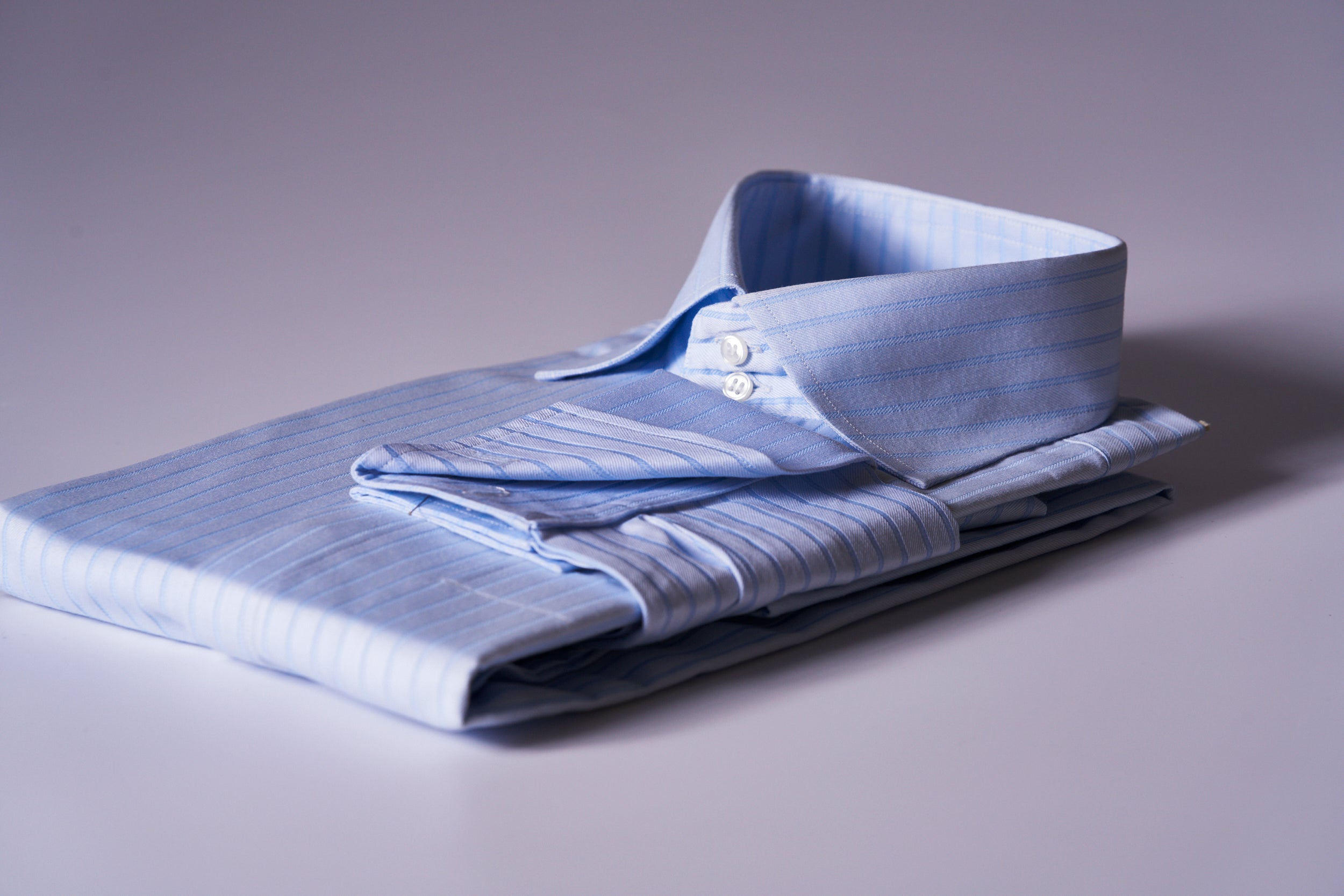How can you wash shirts that you wear frequently to keep them looking new? Many people also wonder, 'How can I wash shirts without wrinkling them?' Today, let our custom shirt experts provide a few tips, from washing to ironing, to ensure you wear crisp shirts every day.
First, many people ask if shirts can be washed in a washing machine. The answer is, 'As long as it's not specifically labeled for dry cleaning or hand washing, it's fine.' Have you noticed that shirts returned from the dry cleaners look almost new? In fact, dry cleaners also use washing machines for laundering (except for items that need dry cleaning), but the difference is that they hang them up immediately after washing and use professional ironing techniques to keep the garments smooth.

In fact, shirts will wrinkle as soon as they come into contact with water, no matter what. To remove wrinkles, ironing is necessary, but if a shirt is too wrinkled, no amount of ironing can completely eliminate the creases. To minimize wrinkles and properly care for your shirts, washing and ironing become essential skills!
Professional Shirt Washing Tips Revealed
Shirt Washing Tip 1: Shorten Washing Time
The standard spin cycle time for laundry is usually too long for shirts, leading to significant wrinkling after washing. If possible, even if you choose the standard washing cycle, it's advisable to set the spin time shorter. Spinning until the shirt is about 80% dry is sufficient for hanging to dry.
Shirt Washing Tip 2: Wash with Cold Water
After washing your shirts, you may notice that the button and buttonhole areas are particularly wrinkled. This is often due to water that's too hot. You should wash shirts with slightly cold water (below 30 degrees Celsius) to prevent the buttonholes on the chest and sleeves from shrinking.
Shirt Washing Tip 3: Pre-treat Stains
Consider using bleach or enzyme cleaners to combat stains. If there are specific stains you’re concerned about, you can apply the cleaning agent directly to that area and rub it in beforehand. Once the stain has been removed to a certain extent, wash it with cold water to dissolve any greasy components.
Shirt Washing Tip 4: Shake the Cleaned Shirt Before Drying
When you take the cleaned shirt out of the washing machine, grasp the shoulder area and give it a couple of firm shakes up and down. This loosens the fabric and helps prevent excessive wrinkling.
Shirt Washing Tip 5: Wash Gently by Hand
Clothes tend to stay wrinkled due to the weight of the moisture, so it's best to wash them gently by hand with lukewarm water. Allow the shirt to dry without excessive twisting while still damp—about 80% dry is ideal.
Shirt Washing Tip 6: Avoid Using a Dryer
Letting shirts air dry or ironing them to achieve a smooth finish is much more effective. Avoid using a dryer, as it can cause fading and wear, ultimately prolonging the lifespan of your shirts.
Shirt Washing Tip 7: Do Not Use Thin Metal Hangers
When drying shirts, avoid using thin metal hangers. They are too narrow for wet shirts and can distort the fibers, leading to misshaping. Additionally, metal hangers can rust from contact with damp fabric, leaving stains on your clothes. Opt for plastic or wooden hangers instead.

How to Wash a White Shirt?
White Shirt Cleaning Tip 1: Treat Stains Promptly
Once a stain appears on the shirt, it’s best to address it immediately. Apply a stain remover and water directly to the stain, then gently rub with your fingers.
White Shirt Cleaning Tip 2: Handle Yellowing or Discoloration
For old, stubborn stains, you can pre-treat or soak with stain removers, non-chlorine bleach, baking soda, or hydrogen peroxide to help remove the stains during washing.
White Shirt Cleaning Tip 3: Add Extra Laundry Detergent
If your regular laundry powder or liquid isn’t cleaning your white clothes effectively, you can add whitening agents like baking soda, borax, distilled white vinegar, or hydrogen peroxide.
Cleaning Method for Cuffs and Collars
Cuffs and collars tend to accumulate yellow stains or dirt. You can mix one of the following cleaners—baking soda, borax, distilled white vinegar, or hydrogen peroxide—with water, and gently scrub the dirty areas with a small brush before placing them in the washing machine. Note that delicate fabrics (like silk) may not be suitable for these cleaners as they can damage the fibers.
How to Iron a Shirt?
Ironing Tip 1: Start with Small Areas
If you begin ironing larger sections, previously ironed areas may wrinkle again. It’s recommended to iron in this order: collar → front panel → sleeves (cuffs → sleeve body) → back panel → front body. For deeper wrinkles, spray a bit of water to dampen the area before ironing.
Ironing Tip 2: Basic Ironing Techniques
On a flat area, start with steam ironing. Use steam to soften the fibers, making it easier to smooth out wrinkles. Then glide the iron over the fabric to perform "sliding ironing."

Common Questions About Washing Shirts
How to Wash a Shirt Without Wrinkling?
It’s impossible to avoid wrinkles once the shirt gets wet. As mentioned above, paying attention to water temperature, avoiding excessive spinning (twisting the shirt), and using proper ironing techniques can help keep the garment smooth.
Should You Button Up the Shirt While Washing?
Whether the buttons are done or not, directly placing the shirt in the washing machine can cause stretching and distortion. It’s advisable to use a laundry bag instead.
Do You Need to Wash a New Shirt?
No need to wash it before wearing; just wash it when it gets dirty. Reducing the frequency of washing is also a way to maintain the shirt.
Taking a little time and effort to care for your shirts can keep them looking new. Of course, you can also choose wrinkle-resistant fabric to reduce the need for ironing. If you want to learn more about wrinkle-resistant shirts, feel free to consult us online for free.




